-
Four-legged “pack mule” robots demonstrate their capabilities
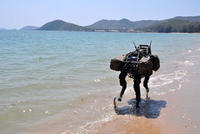
Two completed prototype robotic “pack mules” exhibit reduced noise, new gaits, and improved perception, the two functioning platforms have started to run through the paces similar to what they could one day experience carrying gear for a squad of Marines or Soldiers
-
-
Border Patrol kiosk detects liars trying to enter U.S.

The U.S. Customs and Border Protection (CBP) is using border crossing stations in Arizona to test new technology to detect liars as they attempt to enter the country; travelers are subjected to a 5-minute interview with the kiosk, while microphones monitor vocal pitch frequency and quality, an infrared camera monitors eye movement and pupil dilation, and a high definition camera monitors facial expression
-
-
Drone use spreads to more areas and missions
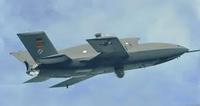
As security challenges in the United State and around the globe change, many countries have one thing in common: unmanned drones will be a significant part of the future of security; advancements in technology are driving the use of UAVs into newareas
-
-
Lifelike, cost-effective robotic hand disables IEDs
Researchers at Sandia National Laboratories have developed a cost-effective robotic hand that can be used in disarming improvised explosive devices, or IEDs; the Sandia Hand addresses challenges which have prevented widespread adoption of other robotic hands, such as cost, durability, dexterity, and modularity
-
-
Soft robots for search-and-rescue and reconnaissance missions
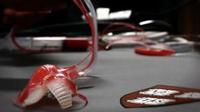
Soft robots are useful because they are resilient and can maneuver through very constrained spaces, which makes them useful for search-and-rescue and reconnaissance missions; researchers show a soft robot made of silicone; it can walk, change color, and light up in the dark; it can even change temperature; it can do all of this for less than $100
-
-
Underground spies to secure Indo-Pakistan border
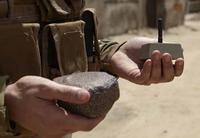
With the discovery of a 400-foot long tunnel at the India-Pakistan Border, the IndianHome Ministry has decided to acquire Unattended Ground Sensors (UGS) that could be installed along the international border with Pakistan as an important line of defense
-
-
College buys small UAV for first-responder training program
Sinclair Community College in Dayton, Ohio purchases small unmanned aerial system (SUAS) from UTC Aerospace Systems for use in the college’s training program for first responders
-
-
First ever outdoor flight test of laser powered UAS
Lockheed Martin, LaserMotive, Inc. have completed a series of flight tests of the Stalker Unmanned Aerial System (UAS) to validate the performance of an innovative laser power system
-
-
UAVs with dexterous arms to help in infrastructure repair and disaster recovery
With current technology, most UAVs perform passive tasks such as surveillance and reconnaissance missions, tasks which are performed well above ground; researchers are interested in how UAVs might interact with objects at or near ground level; a UAV with dexterous arms could perform a wide range of active near-ground missions, from infrastructure repair and disaster recovery to border inspection and agricultural handling
-
-
UAV Code of Conduct for unmanned aircraft systems operations released
The Association for Unmanned Vehicle Systems International (AUVSI) has published the Unmanned Aircraft System Operations Industry Code of Conduct, a set of guidelines to provide AUVSI members — and those who design, test, and operate unmanned aerial systems (UAS) for public and civil use — with recommendations for their safe, non-intrusive operation
-
-
Can UAVs emulate bats’ flight capabilities?
The natural world has countless examples of creatures with extraordinary flight capabilities, but bats have evolved with truly extraordinary aerodynamic capabilities that enable them to fly in dense swarms, avoid obstacles, and fly with such agility that they can catch prey on the wing, maneuver through thick rainforests, and make high-speed 180 degree turns; researchers want to know whether UAVs can emulate bats
-
-
Robotic jellyfish to patrol oceans, clean oil spills, detect pollutants
Scientists are working on developing life-like autonomous robot jellyfish which will be put in waters around the world; the robot jellyfish would be used for military surveillance, cleaning oil spills, and monitoring the environment
-
-
U.K. robotics R&D receives major boost
U.K. research to develop smart machines that think for themselves received a £16 million boost yesterday thanks to a major partnership between the government and industry. This research includes safe ways of monitoring in dangerous environments such as deep sea installations and nuclear power plants, “nursebots” that assist patients in hospitals, and aerial vehicles that can monitor national borders or detect pollution
-
-
Teaching robots to pick up oddly shaped objects
The use of robots in military and first response missions is growing; in some of these missions – for example, checking a suspicious object, lifting an oddly sahped IED off the floor — robots need more flexibility and dexterity than is currently available; researchers offer encouraging news on this front
-
-
Flying robots equipped with 3D gear: better surveillance on the cheap
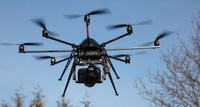
Whether deployed to create virtual maps of difficult-to-access areas, monitor construction sites, measure contamination at nuclear power plants, assess conditions in a disaster-ravaged area, or identify rowdy soccer hooligans, mini UAVs could be used in a wide range of applications, obviating the need for expensive aerial photography or satellite imaging
-
- All
- Regional
- Water
- Biometrics
- Borders/Immig
- Business
- Cybersecurity
- Detection
- Disasters
- Government
- Infrastructure
- International
- Public health
- Public Safety
- Communication interoperabillity
- Emergency services
- Emergency medical services
- Fire
- First response
- IEDs
- Law Enforcement
- Law Enforcement Technology
- Military technology
- Nonlethal weapons
- Nuclear weapons
- Personal protection equipment
- Police
- Notification /alert systems
- Situational awareness
- Weapons systems
- Sci-Tech
- Sector Reports
- Surveillance
- Transportation
Advertising & Marketing: advertise@newswirepubs.com
Editorial: editor@newswirepubs.com
General: info@newswirepubs.com
2010-2011 © News Wire Publications, LLC News Wire Publications, LLC
220 Old Country Road | Suite 200 | Mineola | New York | 11501
Permissions and Policies
Editorial: editor@newswirepubs.com
General: info@newswirepubs.com
2010-2011 © News Wire Publications, LLC News Wire Publications, LLC
220 Old Country Road | Suite 200 | Mineola | New York | 11501
Permissions and Policies
